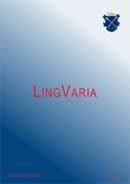Relacje między językiem ogólnym a językiem specjalistycznym w perspektywie językoznawstwa polonistycznego, stosowanego i glottodydaktyki
Relations between the general and specialized language from the perspectives of Polish studies, applied linguistics and glottodidactics
Author(s): Bronisława LigaraSubject(s): Language and Literature Studies
Published by: KSIĘGARNIA AKADEMICKA Sp. z o.o.
Summary/Abstract: The paper presents approaches to specialized languages regarded as a linguistic phenomenon. It examines the perspective of Polish studies on one hand, and those of applied linguistics and Polish glottodidactics on the other. The specifity of a specialized language is determined by its relation to the general language. A specialized code is considered such a variety (subset) of the Polish national language, which is functionally autonomous from the general language and untranslatable into it. The definition of a specialized language is determined by pragmatic, linguistic and structural criteria, but what most makes a specialized code stand apart from a general language, is the pragmatic dimension of its usage, and it is from this pragmatic aspect, too, that purely linguistic properties follow. Functional autonomy of specialized languages does not entail a strict isolation, a complete separation from the general language. There is a constant flow between the specialized languages and the general language, a continuous exchange mostly of lexical units, but also of structures. Specialized languages are differentiated one from the other in the horizontal dimension by the specialized field that a given language serves. In the vertical division, on the other hand, each specialized language can surface in one of its own characteristic variants. The scientific language, composed of the common properties of languages serving specific scientific fields, is also a specialized variety of Polish, and, what is more, its most important subset thanks to its cognitive and communicative functions.
Journal: LingVaria
- Issue Year: 2011
- Issue No: 12
- Page Range: 163-181
- Page Count: 19
- Language: Polish

